Hitting the WallExhibits, Talks Break Down Barriers to Understanding Migrant Experience
Hitting the WallExhibits, Talks Break Down Barriers to Understanding Migrant Experience
Walls and fences were at the heart of a series of events on the Vassar campus this fall. These included physical barriers, such as the Berlin Wall that fell three decades ago and the one that separates families at the U.S.-Mexico border; and the emotional obstacles that challenge tens of millions of displaced men, women and children across the globe. Organized by Professor of History Maria Höhn, Brittany Murray, Program Coordinator of the Consortium on Forced Migration, Displacement and Education (CFMDE) and Adjunct Professor of International Studies; Matthew Brill-Carlat ’19, Coordinator of Research and Pedagogy for CFMDE, and Ava McElhone Yates ’21, this month-long series of events was inspired by the 30th anniversary of the fall of the Berlin Wall on November 9, 1989. Generous funding from the Department of of History, American Studies and the Consortium contributed to making these events a reality.

At the installation of the exhibit on the U.S. – Mexico Border in the College Center. (Left to right) Carlos Espina ’20, Professor of History Maria Höhn, Ava McElhone Yates ’21 and Matthew Brill-Carlat ’19.
Events included:
- Know Your History and Geography, an exhibition of photos of the Berlin Wall, by internationally acclaimed photojournalist Leonard Freed;
- Know Your History and Geography: Students, Artists and Activists Narrate the U.S.-Mexico Border, an exhibition curated by Ava McElhone Yates ’21 and Rick Jones of the Geography Department that includes photographs, artwork, videos, and other materials created by students and members of the local community. That exhibition also included a display of letters to Vassar student Carlos Espina ’20 written by refugees housed in immigration detention centers throughout the United States.
- A panel discussion on Walls, Borders and Fences with Paul Farber of the Philadelphia Monument Lab, Associate Professor Joseph Nevins of the Department of Geography, Ava McElhone Yates ’21, Carlos Espina ’20 and Ivanna Guerra ’20;
- Life After War: Disturbed, an exhibition of photographs that feature individuals across the globe who were displaced due to war and violence, by photojournalist Amy Kaslow ’81;
- The screening of four documentaries on the impact of forced migration: Sky and Ground, by Joshua Bennett, which tells the story of a Kurdish refugee family from Northern Syria to Berlin; From Beacon to the Border, which chronicles the journey of 30 members of a local activist group “Grannies Respond,” to the U.S.-Mexico border in 2018; The Transition, which explores the social impact of the fall of the Berlin Wall; and The Destruction of Memory, which focuses on the destruction of historical monuments and cultural artifacts during the recent wars in Iraq and Syria;
- The series of events framed an international two-day conference on “Global Displacement and Mental Health,” that brought together scholars, physicians, clinicians, mental health providers, representatives from NGOs, and policy makers from Asia, Africa, the Middle East, Europe, Canada and the U.S. The conference was organized by the Consortium’s partner schools, Vassar College and the New School for Social Research, and was funded with support from the Mellon Foundation, the Social Science Research Council and the University Alliance for Refugees and Risk Migrants.
Maria Höhn, Professor of History on the Marian Musser Lloyd ’32 Chair and a founder of the Consortium on Forced Migration, Displacement and Education, said the conference and other events on campus had helped to define the role liberal arts colleges can play in advancing the dialog about forced migration. “I think we laid some of the groundwork at the conference for future discussions about forced migration and mental health education and training,” Höhn, said. “Western science has to focus on different cultures that have different values, including the enhanced roles of spirituality and religion.”
With funding from the Social Science Research Grant, two more such conferences will take place in the next 18 months to continue the discussion started at Vassar.
Höhn said the photo exhibition on the Berlin Wall and the accompanying exhibits curated by McElhone Yates also helped to frame the issues surrounding global displacement. “The work that Carlos (Espina) and Ava (McElhone Yates) and members of the local community are doing are all part of this ongoing conversation,” she said.
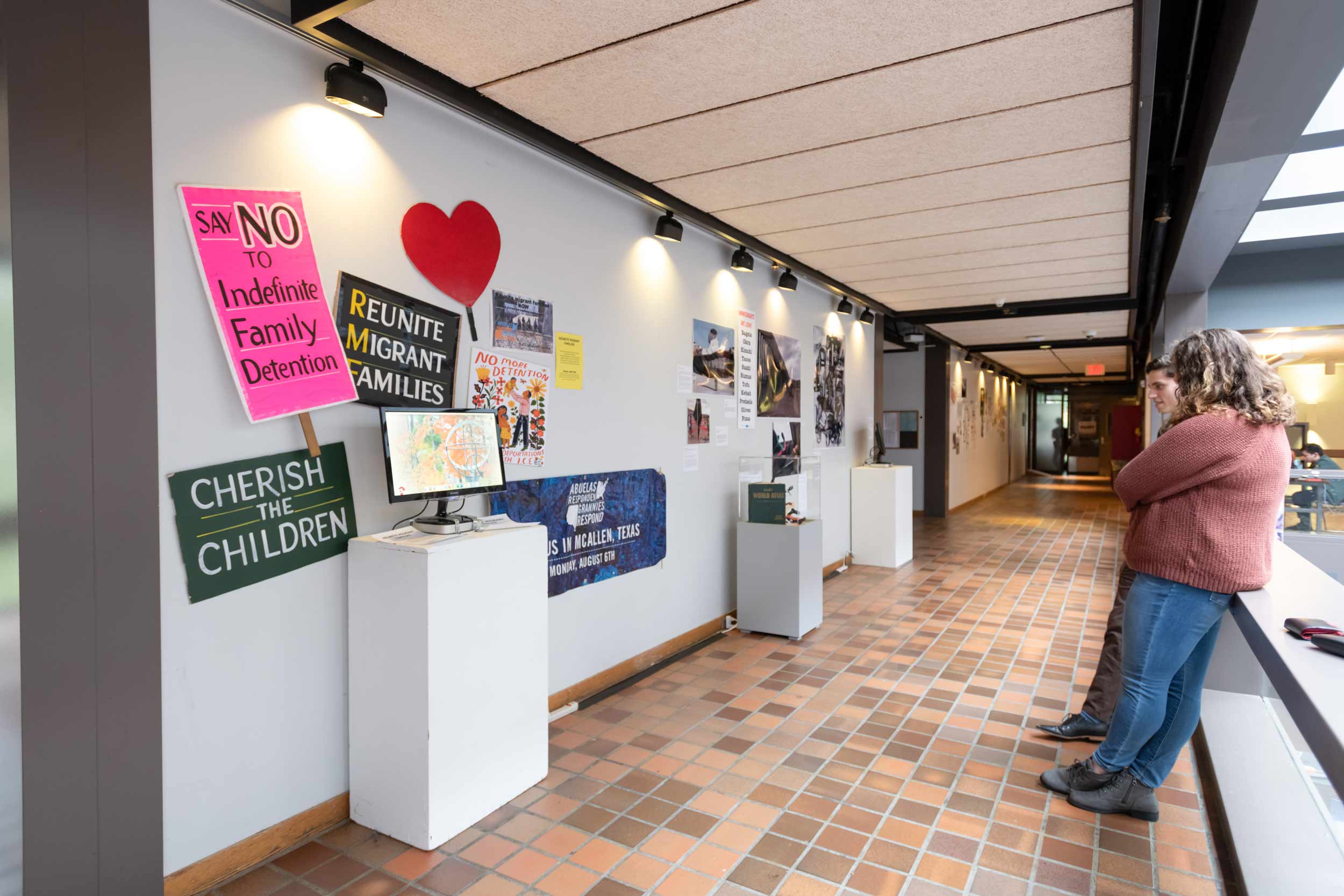
A portion of the installation of images, maps and videos, curated by Ava McElhone Yates ’21, on global displacement.
McElhone Yates, a history major from Easthampton, MA, said she conceived of her exhibition after she learned that Freed’s photos of the Berlin Wall would be displayed in the Palmer Gallery. “My project is asking people to look back in the past in order to think about what’s happening now,” she said. “Since joining the Consortium, I’ve met many local artists and activists. I realized we have a lot to learn from each other, and I wanted to bring some of that knowledge to the campus.”
The exhibit includes photographs of people meeting at the fence at the U.S.-Mexico border, a chart explaining the serpentine path facing asylum seekers who wish to live in the United States, a video about the plight of immigrants produced by a Poughkeepsie-based activist group, Grannies Respond, maps and other materials that chronicle the history of U.S. involvement in Latin America, and a painting by Poughkeepsie artist Charles Geiger that was inspired by his visit to the border.
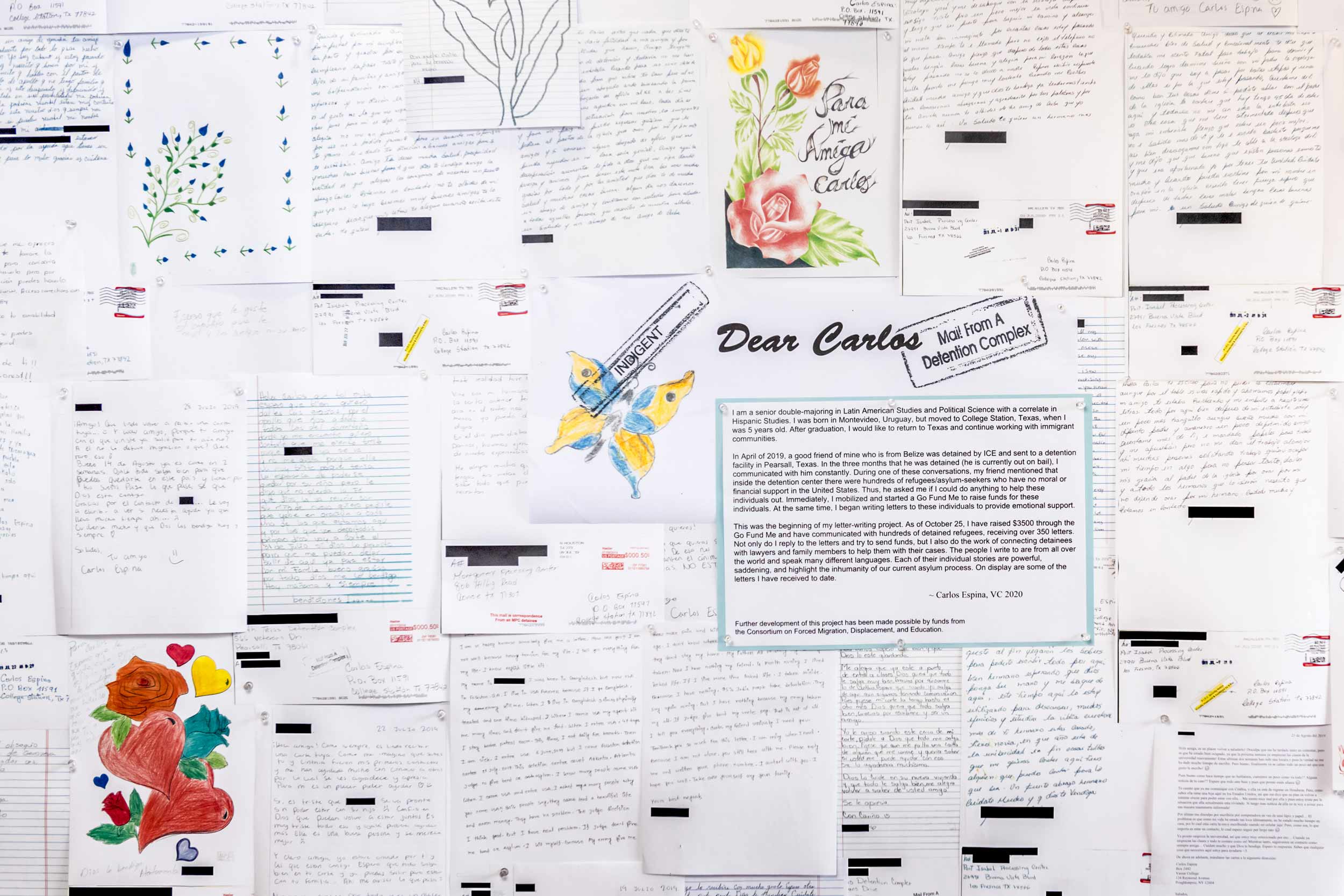
Letters to Carlos’ Espina ’20 from men and women being held in ICE detention centers are on display on a wall in the College Center as part of the exhibition on the U.S.-Mexico border.
Espina, a Latin American and Latino/a Studies major from College Station, TX, said his letter-writing project was generated by a letter he received last spring from a high school friend who was being held in an Immigration and Customs Enforcement (ICE) detention facility. Espina was able to put his friend in touch with an attorney, and he was eventually released. But when his friend told him that there were many others in ICE facilities who needed such help, Espina began to correspond with them, too. “My friend gave me some names, and I’ve been corresponding with people in detention centers all over the country ever since,” he said.
With help from Earth Science and Geography Laboratory Coordinator Richard Jones, Espina displayed the letters on a wall on the second floor of the College Center and provided a desk and writing materials so others may correspond with those held in ICE detention centers. “I’ve learned that helping people make just one phone call can be a life-changer,” Espina said. “We see politicians on TV all the time talking about the problem, but we don’t see the people who are affected. I’m just trying to give a voice to people who are being ignored.”
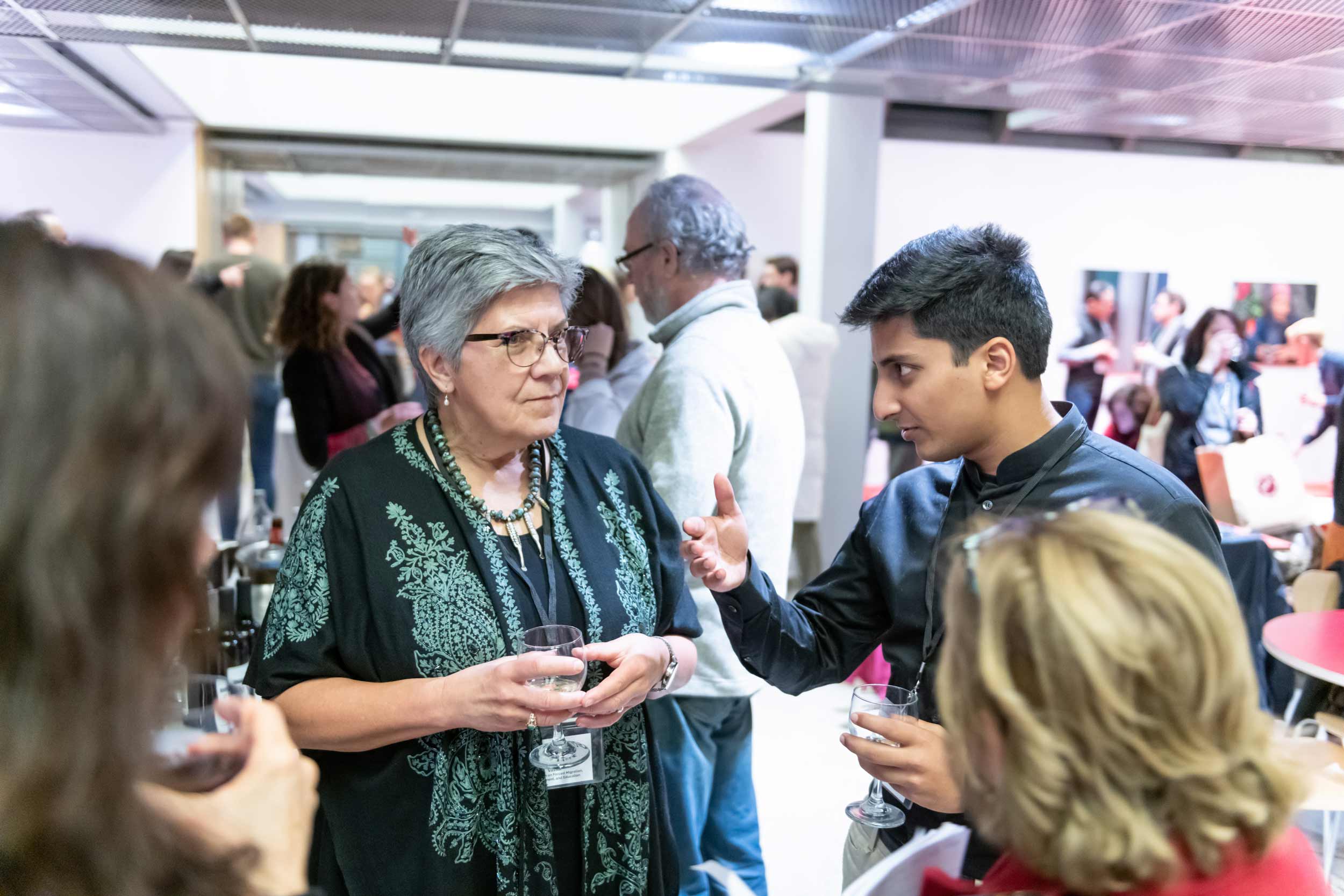
Professor Höhn and Anish Kanoria ’18, a co-founder of Vassar Refugee Solidarity, attended the opening of an exhibit, Life After War: Disturbed, by photojournalist Amy Kaslow ’81, on the eve of a two-day conference, “Global Displacement and Mental Health,” on the Vassar campus.
Kaslow, who served as a panelist at the Global Displacement and Mental Health conference, has been covering issues affecting at-risk societies worldwide for the past 30 years for publications such as The Washington Post, The Wall Street Journal, HuffPost, Fortune Magazine and many others. She said she first began to focus on the mental health of displaced persons in 2011. “The surge of refugees that began then in Syria and other parts of the Middle East got me to look at this, and I found there had not been a lot of work done on it,” she said.
Kaslow’s exhibit, currently on display in the Old Bookstore in the basement of the College Center, includes large images of refugees in more than a dozen countries, along with a storyboard containing text describing the challenges these refugees were facing. She said some of the photographs in the exhibit were taken nearly three decades ago while others were taken as recently as this year.
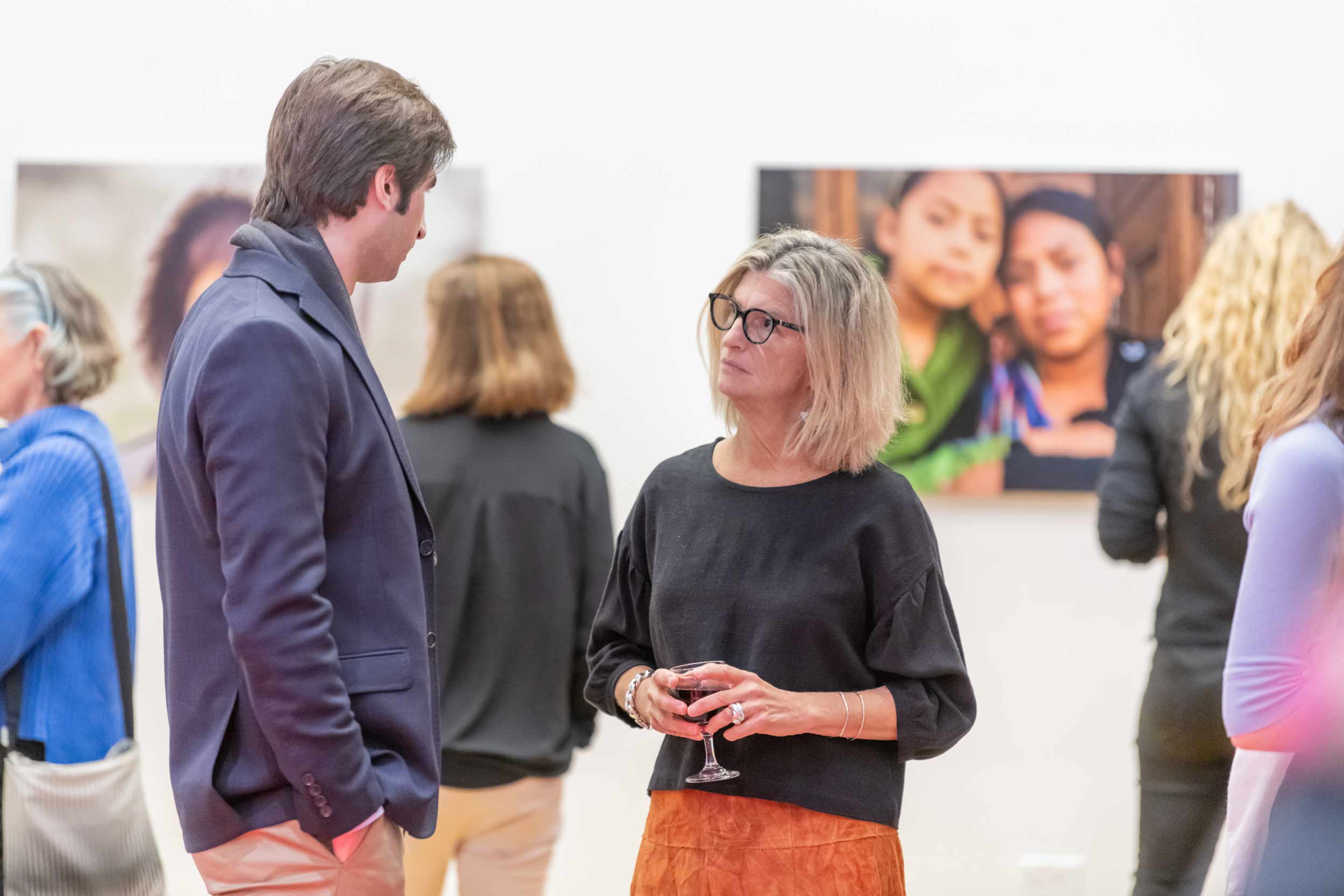
Kaslow talks about her exhibit during the reception.
As bleak as the lives of tens of millions of forcibly displaced people may be, Kaslow said she’s also found some reason for hope. In Guatemala, for example, where violence against women is rampant, programs have been established that enable women to gain economic independence through rug-weaving cooperatives. “The money they make has been used for water systems in their villages and for uniforms so their kids can go to school,” she said. “This model of using the arts to work through trauma is being duplicated elsewhere. Women are gaining self-esteem and moving past the suffering and psychopathy you see everywhere.”
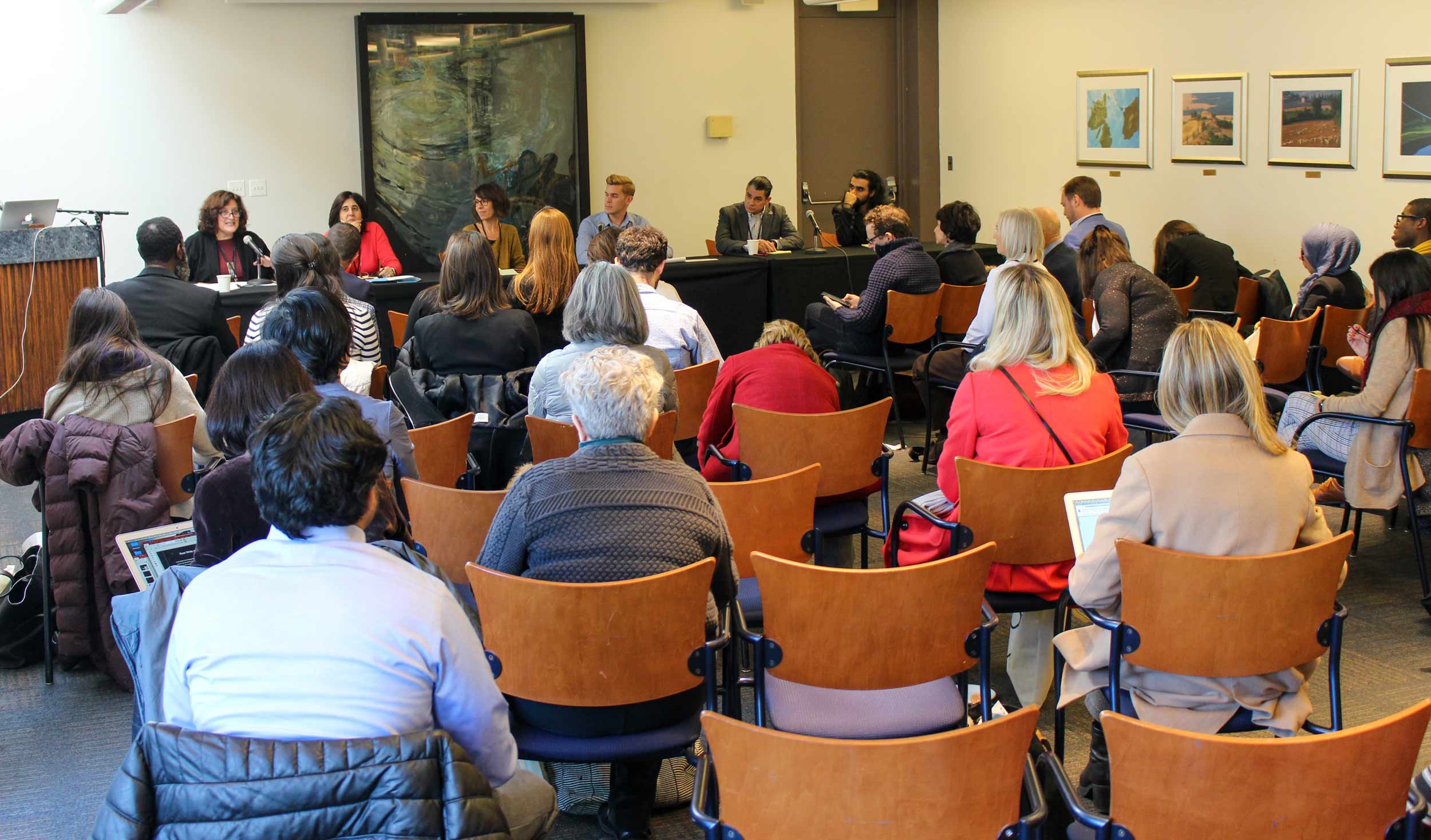
Scholars and experts in the mental health field took part in a two-day conference on the Vassar campus.
Photo: Bennett Fort ’23Kaslow said the work being done by the Consortium was a source of pride for her as a Vassar alumna. “I’ve been doing this work for years, and I have never seen a college or university take this on with such breadth and depth,” she said. “Vassar is at the forefront of this issue because Maria Höhn is academically and intellectually generous in forming meaningful partnerships.
“The only way we are going to get a grip on this problem,” Kaslow continued, “is if colleges like ours turn out graduates who are equipped to clean up the mess we have left in this world.”
For more information on this topic, visit:
- http://www.amykaslow.com/events/2019/11/4/cfmde-vassar
- https://www.europenowjournal.org/2019/10/28/life-after-war-disturbed/
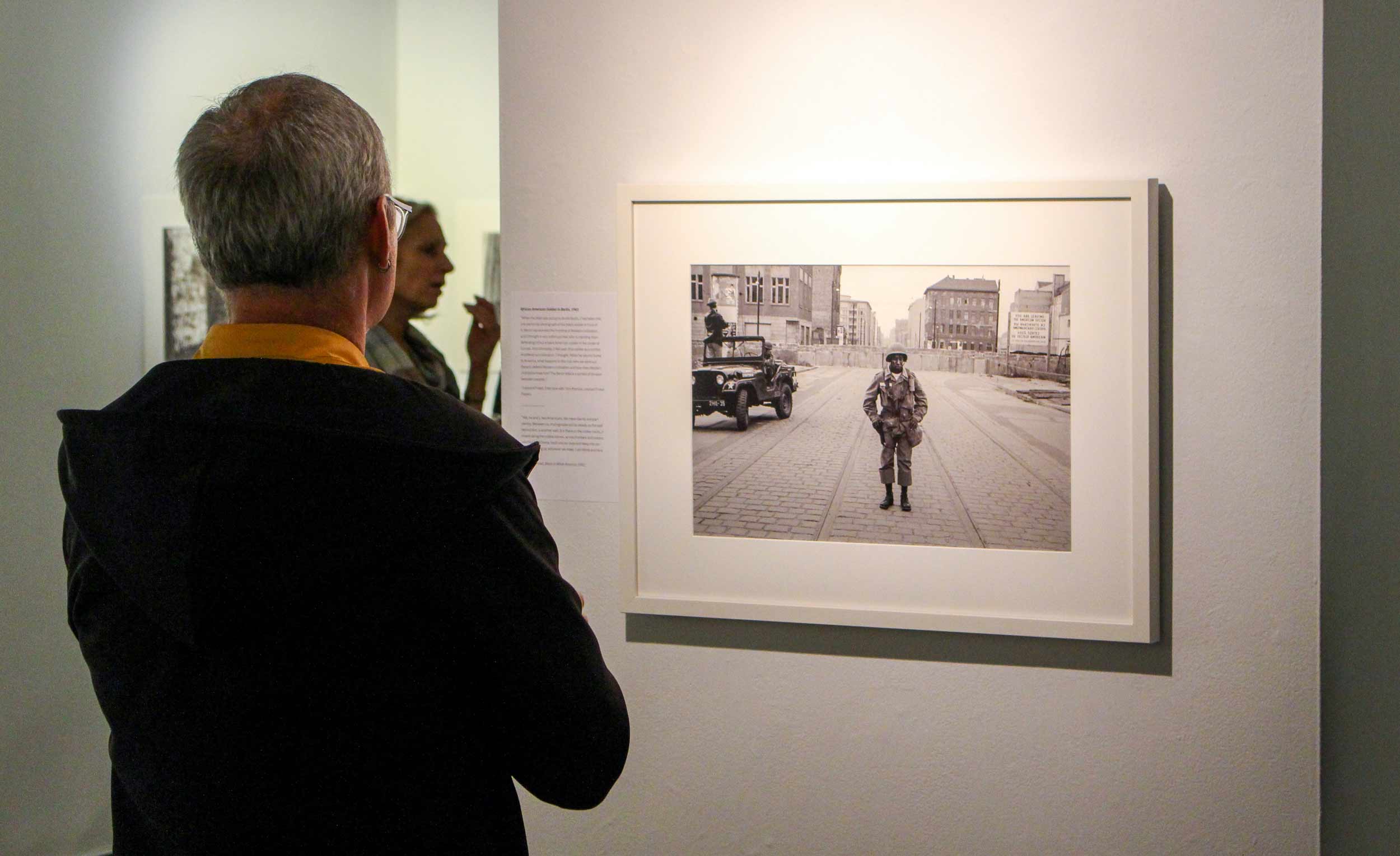
The events exploring global displacement were inspired by an exhibition in the Palmer Gallery of photographs of the Berlin Wall taken by renowned photojournalist Leonard Freed.
Photo: Bennett Fort ’23